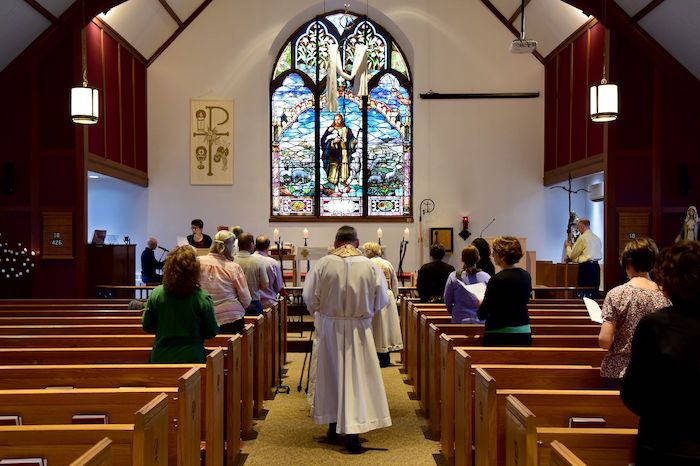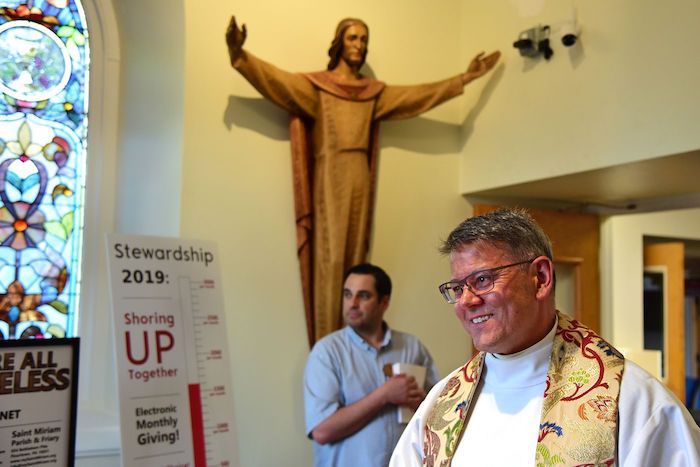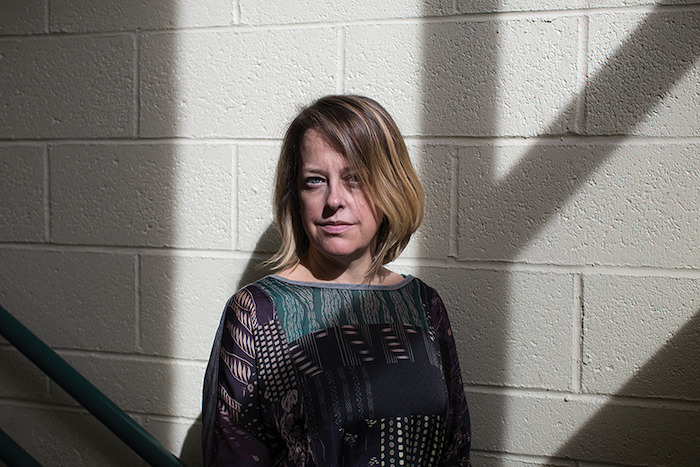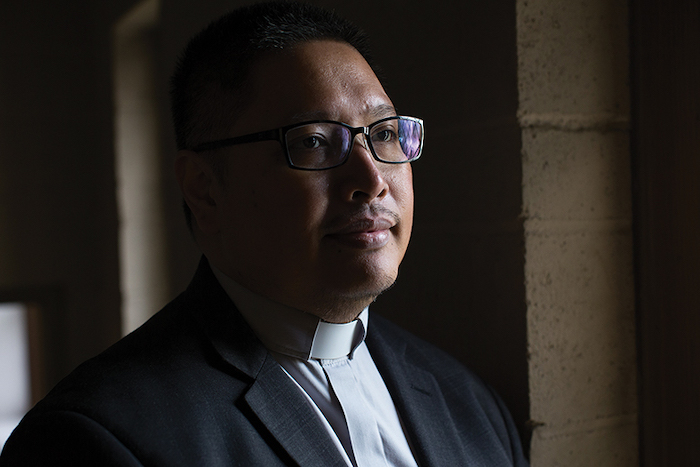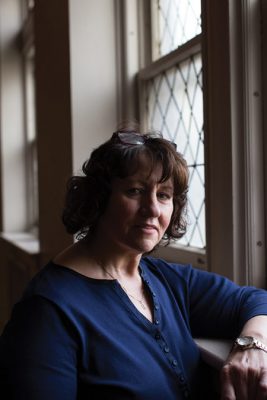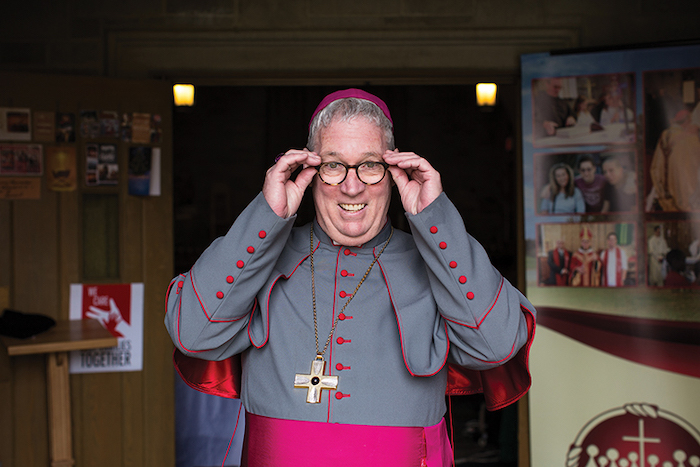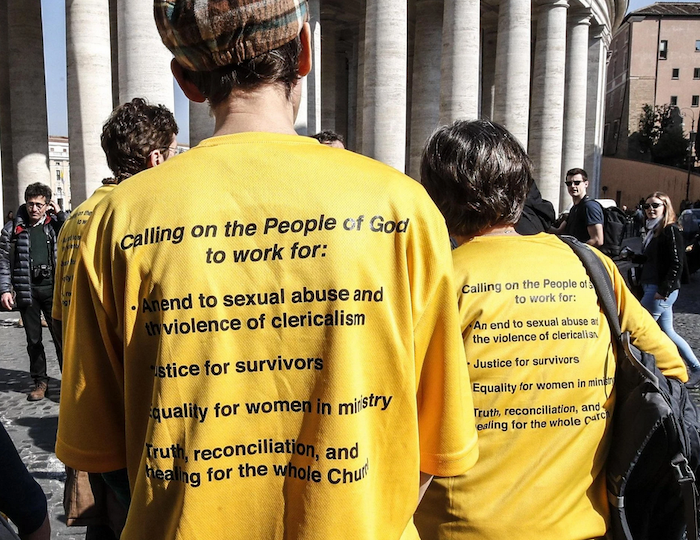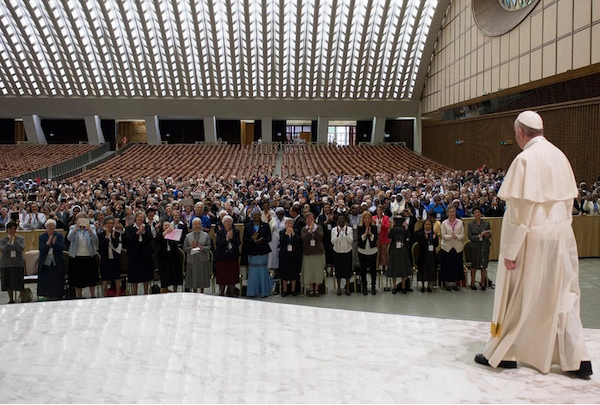
THE Association of Catholic priests (ACP) was very disappointed at Pope Francis’ response to the demand for the ordination of female deacons. The Pope said that a commission he appointed three years ago failed to reach a consensus on whether female deacons in the early Church (1st century AD) were ordained in the same way as male deacons.
Consequently, for now the jury was out (in the 21st century). Nothing would be done to change the situation (for another 21 centuries?). And that was that!
The ACP responded with a sharp criticism, asserting that the Pope was ‘kicking the can down a timeless road.’ They said that the equality of women was critical for the credibility and the future of the Church, and that introducing ordained women deacons was a minimalist step. If the Pope couldn’t take such a step, there was little or no prospect of any movement towards equality.
A knotty topic, indeed, but we must confess that we rather liked the quirky reference to kicking tin cans. It suggested the activities of idle urban young fellas with nothing better to do than playing footie with the Supreme Pontiff, Bishop of Rome, Vicar of Christ and Holy Father who every now and then directed an aimless lash at a metal container (beans, perhaps?) with a finely polished Italian boot.
And although ‘gurriers’ are linked with the kicking of tin cans, we are sure that the Association of Catholic Priests in no way wanted to give the impression that the Pope’s street activities were in any way similar to those sections of modern youth who engage in loutish behaviour.
Has ‘no authority’
Yet, as matters stand, the can-kicking squad (in Vatican colours) consists of God, the Pope, the cardinals, the bishops and priests and, on the sideline, the humble deacons.
The latter are ordained men who are not priests although they wear vestments at mass and some even sport Roman collars. Single or married, their job is to serve and assist priests and bishops. They’re entitled to baptise, preach, ‘do’ weddings and run a parish, but they cannot consecrate the Eucharist or hear confessions.
But, and here’s the contentious bit, the Church says the Pope, has ‘no authority whatsoever to confer priestly ordination on women.’ It ordains only men.
The ACP says that’s a form of discrimination (for that matter, neither does Canon Law allow transgender people to be ordained. In the eyes of the Church, ‘trans-men are considered to be women and trans-women to be men of unsuitable character’).
Deacon Phoebe
As Pope Francis bluntly put it, ‘the door is closed’ regarding women’s ordination. In fact, the only female deacon mentioned in Scripture is a lady named Phoebe! And no, we’re not referring to Monty Python or the ‘Life of Brian!’ (See Paul’s Epistle to the Romans, verses 16: 1-2).
In recent years, historical-theologians have had a field day arguing for and against the fact that as far back as the First Council of Nicaea in 325 women could receive sacramental ordination in certain times and places, and that it was not until the 13th century that women were utterly prohibited from becoming priests.
For men only
Fast forward to the Second Vatican Council (1962-65) and, once again, the pros and cons of women being ordained deacons and having the same functions as male deacons were hotly debated. Since then, the argument in favour of ordaining permanent female deacons has gathered pace, despite entrenched opposition from Vatican greybeards.
Sadly, all the signs are that the ‘Men Only’ regulation is set to continue secula seculorum even though prominent ecclesiastics, such as the Archbishop of Quebec, opposed the anti-woman bias. It’s significant too that an International Theological Commission (1992-97) produced a report that was positive, although the hardline Cardinal Ratzinger delightfully refused to circulate the contents.
Eventually, in May 2016, Pope Francis gave way and said he would create a commission to study the role of women deacons in the early Church. The purpose was to find an answer to the question as to whether women could serve as deacons today.
Last January the Pontifical Commission for the Study of the Diaconate of Women unofficially gave its answer to Pope Francis: no!
Lost in translation?
But, although the conclusions have not been released, judging from Pope’s response, he agrees with the thumbs down, interim decision. However, in a recent press conference that he gave on a plane journey from Bulgaria, he admitted that some members of the commission had opinions that seriously differed from Rome’s.
The Pope was asked what he learned from the report. His response was linguistically weird (perhaps something was lost in translation?). He said: ‘On the question of the female diaconate, there is a way of conceiving it that is not with the same vision as that of the male diaconate.
‘For example, the formulae of diaconate ordination (of women) found up to now are not the same as for the ordination of the male diaconate. Rather, they are more like what today would be the blessing of an abbess.
‘There were deaconesses at the beginning of the Church, but the question is was theirs a sacramental ordination or not? They helped, for example, in the liturgy of baptism, which was by immersion, and so when a woman was baptised the deaconesses assisted.
‘Some say there is a doubt. Let us go forward to study the women’s diaconate. I am not afraid of the study. But up to this moment it has not happened. Moreover it is curious that where there were women deacons, it was always in a geographical zone, above all in Syria.’
Bad vibes
Hence, the criticism from the Association of Catholic Priests who had expected a different reaction. His comments, they said, sent ‘all the wrong messages about women to women and men.’
It confirmed that women were not good enough in the eyes of the official Church, the result of which would be the waste of women’s gifts, and that the official institutional Church would continue to be perceived as a men’s Church. The Church, they said, was a clerical hierarchical patriarchy and that injustice was built into its heart.
The Irish priests described the Pope’s comments as an enormous blow to those who believe in equality. As a result, it was incumbent on bishops, priests and people in the pews to make their voices heard. ‘Now was not the time for looking over shoulders, thinking of promotions or offending those in authority,’ they said.
Stirring stuff indeed, but (thankfully) not yet in the mould of the 16th century Protestant reformer, Martin Luther, who also had problems with a pope who didn’t want to listen; and we all know what that particular shouting match led to!
Complete Article ↪HERE↩!

